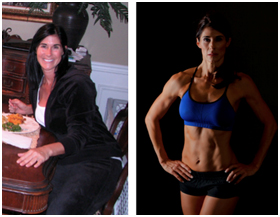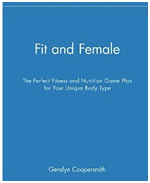Creating a daily healthy eating plan requires some information and a little thought. But you can easily get in the habit of planning healthier meals. The good news is it becomes second nature very quickly. Everything starts out at the grocery store.

|
There are some basic foods that you can buy in bulk and keep on hand because they have a very long shelf life. Oatmeal, brown rice and dried beans of all kinds are examples. They are quite versatile and can easily become dietary staples.
You will also want to add frozen fruits and vegetables to your shopping cart. There are tons of positive benefits to fresh fruits and vegetables, as long as they are truly fresh.
If you cannot buy fruits and vegetables in season from a farmer’s market, you are getting produce that was picked before it was ripe, which means the foods did not have adequate time to absorb all of the nutrients they could get from the soil. Frozen fruits and vegetables are picked when they are fully ripened and frozen immediately. When you are creating a daily healthy eating plan, this is definitely something to keep in mind.
The canned foods that I like to keep on hand include diced tomatoes with and without green chilies, black and kidney beans (because I don’t always have time to soak dried beans) tuna and salmon. I also keep lots of spices in my spice rack, including salt substitute, black pepper,garlic powder and of course, Tony Chacheres. Liquid seasonings that I keep on hand are hot sauce, Worcestershire sauce, low sodium soy sauce and a variety of balsamic vinegars.
When creating a daily healthy eating plan, you can find many helpful free weekly diet plans on the internet based on the number of calories that you need in a day. The plans however are mostly based on food servings, rather than on specific foods. I can help you with the right food choices that transform. Often they will have processed options that are more focused on calories and weight loss rather than lean, toned beautiful muscles.
Creating a Daily Healthy Eating Plan does not have to be difficult!
 |
Generally speaking, you need to take into consideration your body type as well as your caloric needs when creating a weekly diet plan meal. There are 3 main somatotypes butseveral combinations of these 3 as well. And these body types respond differently to macronutrients, which are your proteins, carbohydrates and fats.
A good health diet weekly planner would be varied in terms of all these macronutrients but the timing of which they are eaten is a matter of fat storage or fat loss. I am a mesomorph body type…now. I used to be an endomorph. Simple carbs rather than sweets were my enemy. And to some degree they still are, even the good complex carbohydrates. I have much more food freedom now that I have built up so much lean muscle but I still have to watch my carb intake after 3 pm. I typically do not eat carbs in the evening with dinner.
My daily caloric intake is somewhere between 1800 and 2100 a day divided into 6 meals. However, remember this is a lifestyle and I rarely count calories. I don’t have to when I know I am eating the right portions and macronutrients. It should become second nature to you.
So where do you start?
 |
- Calculate your calorie requirements based on your lifestyle and activity level
- Identify your body type.
- Calculate your macronutrient requirements based on the above information.
- Divide into 6 meals a day.
- Plan your shopping list and the things that you can keep on hand in bulk, do it.
- Get active and start building lean muscle.
If this seems overwhelming to you, don’t fret. You still have a couple of options. If you are a member of a good gym, someone should be on staff that you can pay to develop a plan for you or you can contact me. I am happy to help!


